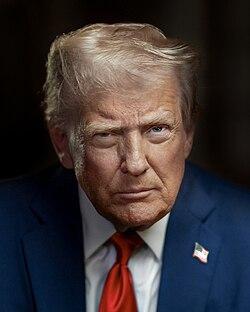Former President Donald Trump has stated that negotiations between the United States and India are ongoing despite his earlier threat to impose a 25% tariff on Indian goods. The announcement comes amid escalating trade tensions between the two countries, as both sides seek to resolve disputes over tariffs and market access. According to Trump, dialogue remains open, signaling that a resolution may still be within reach despite the recent impasse.
US and India Continue Trade Discussions Amid Tariff Tensions
Despite escalating tensions over trade tariffs, the United States and India remain engaged in ongoing negotiations to resolve their economic differences. The administration reaffirmed its commitment to dialogue after the US president threatened a 25% tariff on Indian goods, aiming to address perceived imbalances in trade relations. Both nations continue working through complex issues involving market access and regulatory reforms.
Key areas under discussion include:
- Tariff reductions on key commodities and industrial goods.
- Intellectual property protections to safeguard American technology.
- Agreements on agricultural exports to enhance reciprocity.
- Addressing trade deficits and ensuring fair competitiveness.
| Issue | US Position | India’s Response |
|---|---|---|
| Steel Tariffs | Maintain 25% tariff for protection | Request exemption citing domestic industry impact |
| Pharmaceuticals | Push for stronger patent enforcement | Stress affordable drug access |
| Market Access | Demand reduction of trade barriers | Propose phased liberalization |
Analyzing the Impact of Proposed 25 Percent Tariffs on Bilateral Relations
The announcement of a potential 25 percent tariff on Indian imports by the US has introduced a new layer of complexity into the delicate fabric of US-India trade relations. While negotiations continue, this development has sparked concern among business leaders and policymakers on both sides. Indian exporters fear an immediate impact on sectors such as textiles, pharmaceuticals, and technology, while American industries worry about supply chain disruptions and retaliatory measures. The tariff proposal signals not simply an economic maneuver but also a strategic bargaining chip in the ongoing dialogue between the two nations.
Analyzing the wider geopolitical landscape reveals several critical factors at play:
- Trade Deficit Concerns: The US administration views the tariff as leverage to address perceived imbalances.
- Diplomatic Sensitivities: Strained talks could affect cooperation in defense and regional security initiatives.
- Market Volatility: Uncertainty may deter investment and disrupt bilateral business confidence.
| Sector | Potential Impact |
|---|---|
| Pharmaceuticals | Higher costs, supply chain delays |
| Information Technology | Service export uncertainties |
| Automotive | Potential tariff escalation, reduced competitiveness |
Strategic Recommendations for Navigating the US-India Trade Negotiation Roadmap
In light of the sustained negotiations between the US and India, amidst threats of a 25% tariff imposition on Indian imports, key strategic moves must be prioritized. Policymakers and stakeholders should focus on creating a flexible negotiation framework that balances American concerns on trade deficits with India’s growing market demands. Critical focus areas include:
- Enhancing transparency on tariff schedules without compromising strategic industry sectors.
- Prioritizing technology transfer and intellectual property protocols to protect mutual innovation interests.
- Leveraging bilateral forums to address non-tariff barriers that hamper bilateral cooperation.
A data-driven approach offers clarity when gauging the impact of potential tariffs and concessions. Below is a simplified comparison of trade impact outlooks under tariff imposition versus continued negotiation:
| Scenario | US Export Impact | India Import Impact | Sector Sensitivity | |||||||||
|---|---|---|---|---|---|---|---|---|---|---|---|---|
| 25% Tariff Imposition | -15% export volume | Significant cost increase | Agriculture, Textiles | |||||||||
| Continued Negotiations | -5% export volume | Moder It looks like your content was cut off mid-sentence. Below is a continuation and completion of your table along with a closing paragraph to wrap up your analysis:
“`html In light of the sustained negotiations between the US and India, amidst threats of a 25% tariff imposition on Indian imports, key strategic moves must be prioritized. Policymakers and stakeholders should focus on creating a flexible negotiation framework that balances American concerns on trade deficits with India’s growing market demands. Critical focus areas include:
A data-driven approach offers clarity when gauging the impact of potential tariffs and concessions. Below is a simplified comparison of trade impact outlooks under tariff imposition versus continued negotiation:
|




